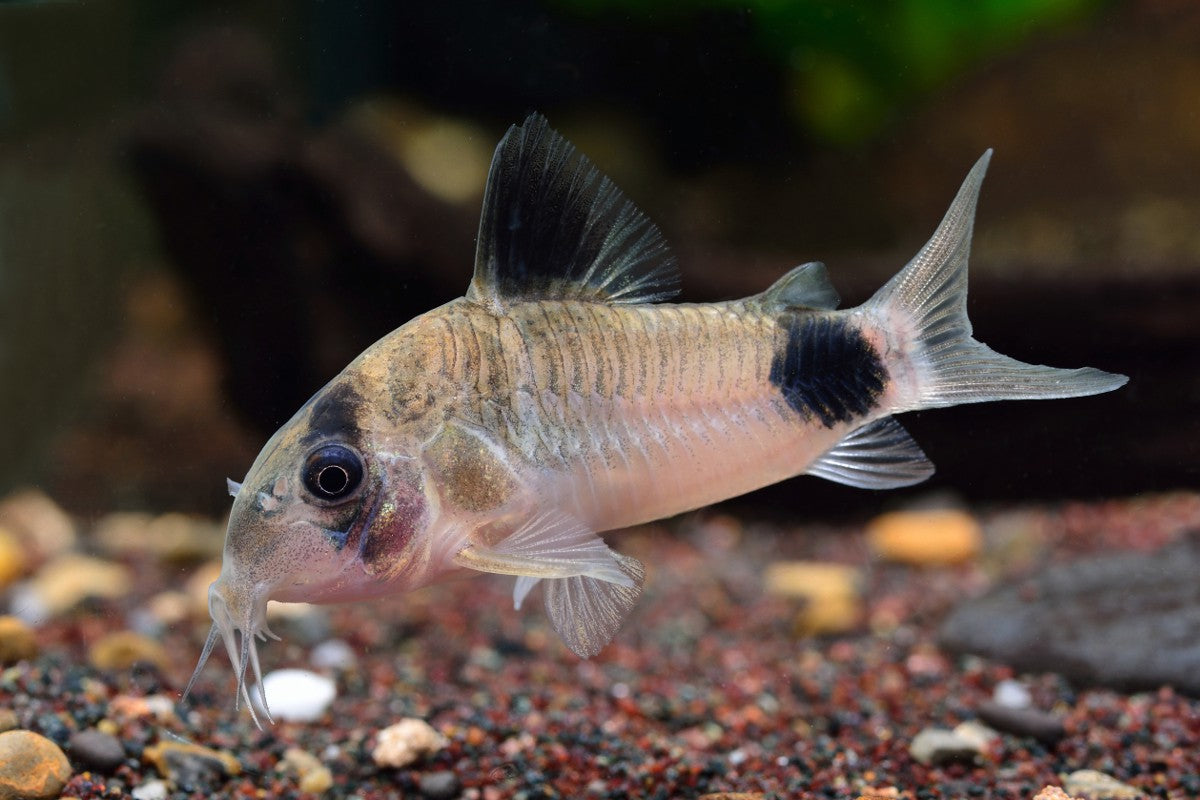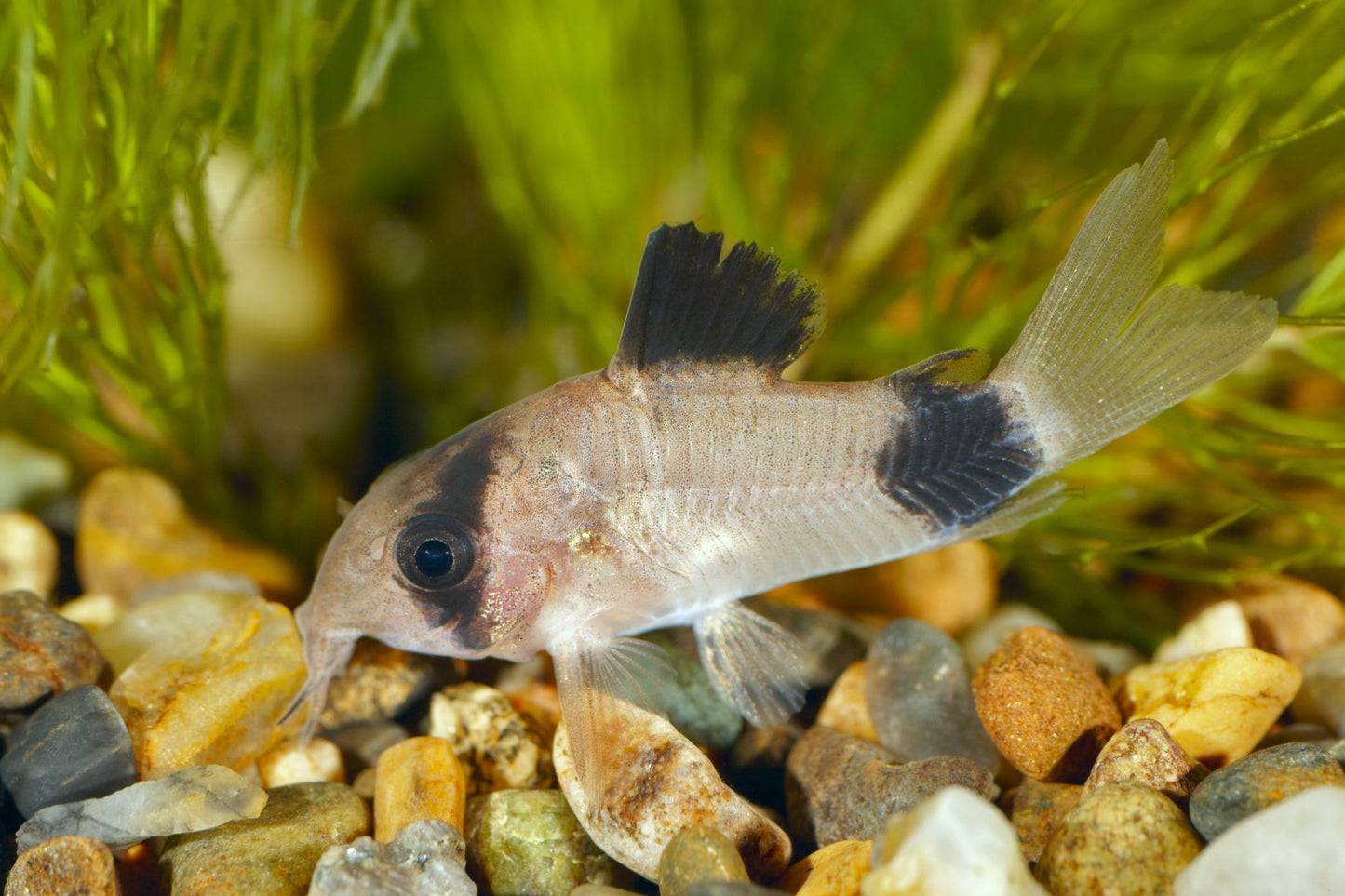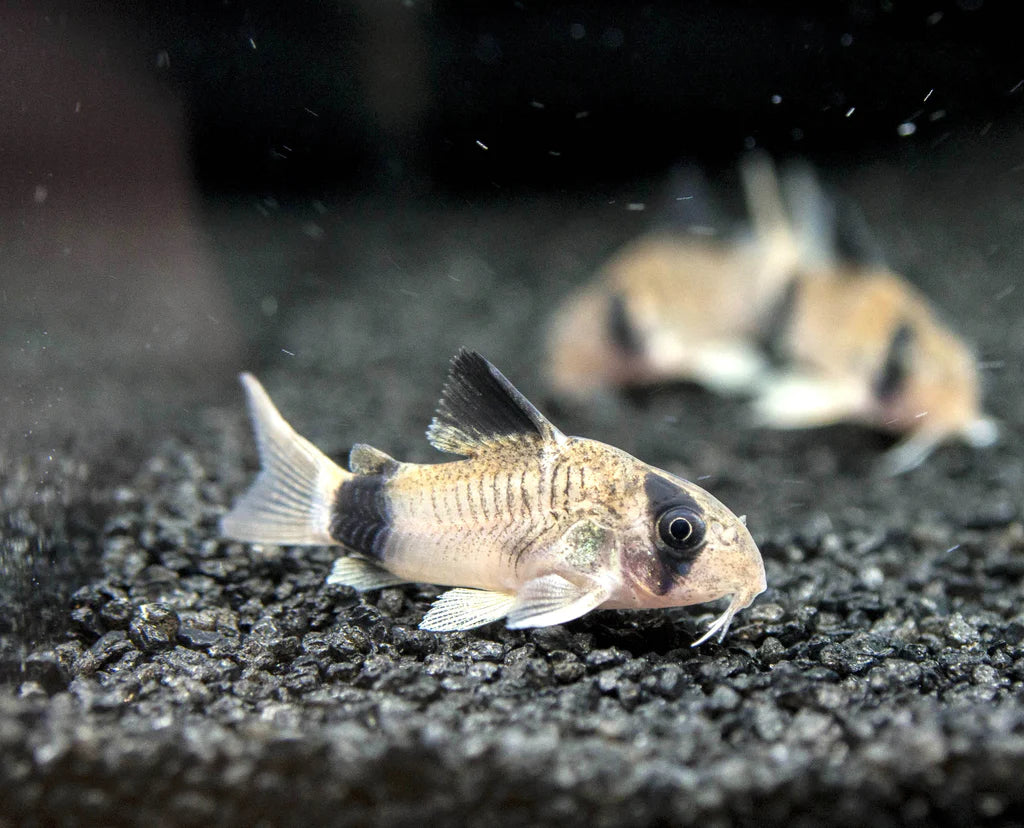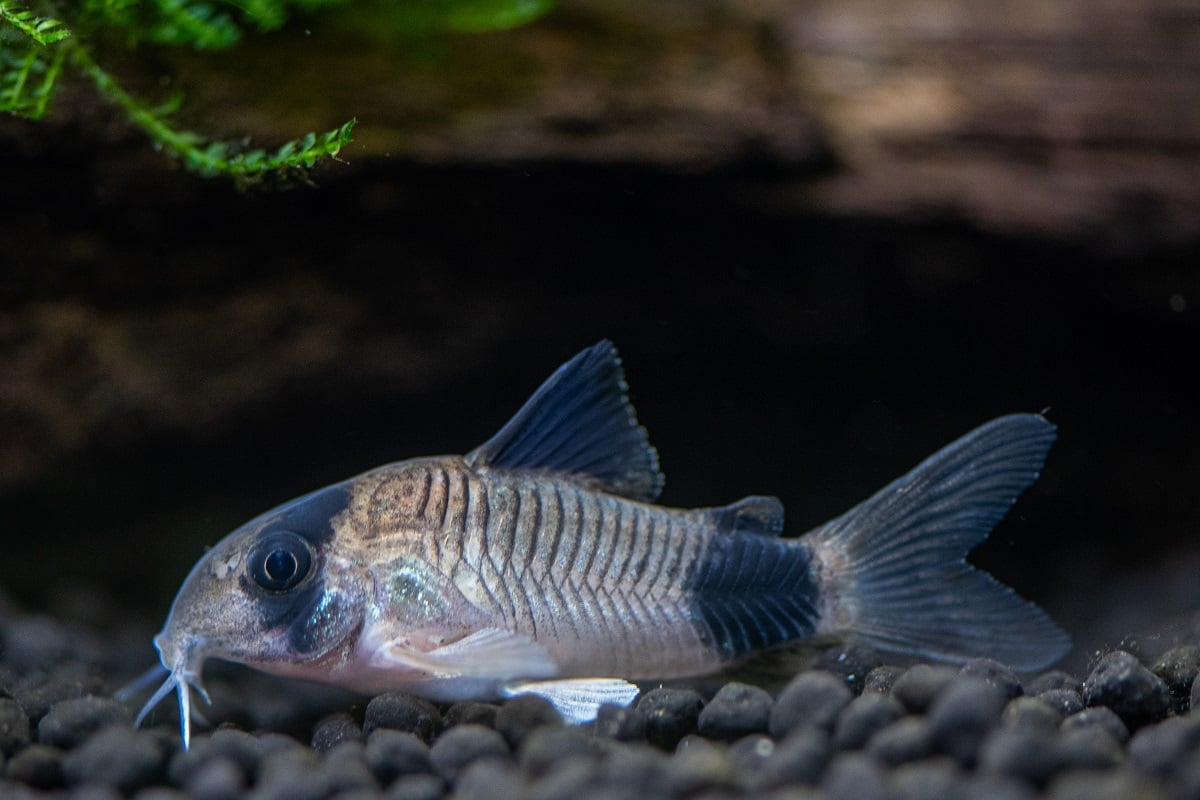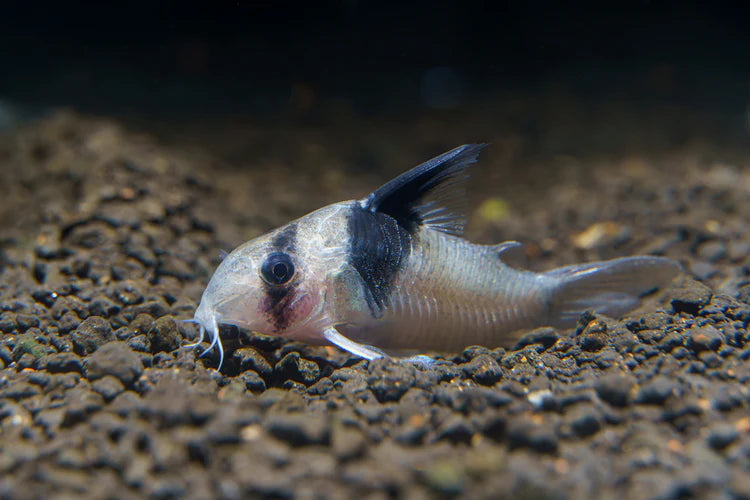Panda Cory (Corydoras panda) - Live Fish
Panda Cory (Corydoras panda) - Live Fish
Total items
Product subtotal
Detailed Description
Detailed Description
DESCRIPTION OF ITEM:
Panda Cory Catfish (Corydoras panda) is a popular and highly sought-after species of freshwater catfish, known for its striking black and white coloration, as well as its peaceful and social nature. Native to South America, particularly Peru, the Panda Cory is a small bottom-dwelling fish that plays an important role in keeping aquariums clean by scavenging leftover food. Due to its charming appearance, small size, and calm temperament, the Panda Cory is a favorite among aquarium enthusiasts.
Physical Characteristics:
Coloration: The Panda Cory is easily recognizable by its unique color pattern. It has a light body, ranging from pale white to light cream, adorned with dark black markings on its fins, face, and dorsal area, resembling a panda bear's markings, hence its name. The fish typically has two black patches on the sides of its head, a dark line running from the eye to the back of the body, and dark fins. This bold coloration makes the Panda Cory visually striking and a beautiful addition to any aquarium.
Size: Panda Corys are small fish, typically growing to a length of about 2 to 2.5 inches (5 to 6.5 cm). Their small size makes them well-suited for smaller tanks or community setups.
Shape: Like all Corydoras species, the Panda Cory has a short, stocky body covered with bony plates that serve as armor. It has a flat, rounded belly that helps it forage efficiently along the substrate. Its sensory barbels (whisker-like appendages) around the mouth are used to search for food in the substrate. The Panda Cory has small, transparent fins and a characteristic triangular dorsal fin.
Behavior:
Temperament: Panda Corys are known for their peaceful and docile nature. They are bottom dwellers and are rarely aggressive, making them ideal for community tanks. They are social fish that prefer to live in schools and should be kept in groups of at least 3 to 6 individuals. Panda Corys exhibit natural schooling behavior and feel most comfortable when surrounded by their own kind, as well as other peaceful tankmates.
Activity Level: Although they are calm, Panda Corys are quite active in the sense that they are always foraging for food on the substrate. They are bottom feeders and will often be seen rummaging through the sand or gravel for leftover food, detritus, and small invertebrates. They are not fast swimmers and spend most of their time on or near the bottom of the tank. These fish are particularly active during feeding times, darting around to pick up food that sinks to the bottom.
Habitat and Tank Requirements:
Water Conditions: Panda Corys are relatively hardy but prefer stable water conditions. They thrive in slightly acidic to neutral water with a pH range of 6.0 to 7.5 and an ideal temperature range of 72°F to 78°F (22°C to 26°C). They are sensitive to poor water quality, so regular water changes and proper filtration are important to keep them healthy.
Tank Setup: A minimum tank size of 10 gallons is suitable for a small group of Panda Corys. These fish are bottom dwellers and prefer soft, fine substrates such as sand or fine gravel. Rough or sharp substrates can damage their sensitive barbels, so it's essential to choose a smooth substrate. It is also important to provide hiding spots, such as plants, rocks, or driftwood, to reduce stress and create a more natural environment. Panda Corys thrive in tanks with gentle water currents, so a mild filtration system is ideal.
Diet: Panda Corys are omnivores and primarily scavengers, feeding on small food particles, detritus, and algae that settle on the substrate. In captivity, they will accept a variety of foods, including high-quality sinking pellets, flakes, frozen or live foods like bloodworms, brine shrimp, and daphnia, as well as occasional plant-based foods like algae wafers or blanched vegetables. It's important not to overfeed, as excess food can lead to water quality issues, and the fish will still be able to find food by scavenging the tank bottom.
Tankmates: Due to their peaceful nature, Panda Corys make excellent tankmates for other small, non-aggressive species. They can be housed with a variety of fish, including tetras, rasboras, guppies, and other peaceful livebearers. They can also cohabit with other species of Corydoras and invertebrates like shrimp and snails. It is important to avoid keeping Panda Corys with larger, more aggressive species, as they may cause stress or compete for food.
Breeding: Breeding Panda Corys in captivity is possible, but it requires some attention to water conditions and temperature. During the breeding process, males chase females, and the female will deposit eggs on aquarium surfaces like plants, glass, or decorations. Once fertilized, the eggs will hatch into tiny fry. The fry should be fed finely crushed foods or infusoria until they are large enough to accept other foods. A separate breeding tank may be necessary to protect the eggs and fry from being eaten by adult fish.
Conclusion: The Panda Cory Catfish is an excellent choice for any freshwater aquarium due to its striking appearance, peaceful temperament, and helpful role in keeping the substrate clean. Its unique black-and-white coloration makes it a standout in community tanks, while its small size and social nature make it a perfect addition to schools of other peaceful fish. Panda Corys are hardy, easy to care for, and get along well with other species, making them a great option for aquarists of all experience levels. With proper care and attention to water quality, the Panda Cory will thrive and provide both beauty and functionality to your aquarium.
Product features
Product features
Materials and care
Materials and care
Merchandising tips
Merchandising tips
Share
